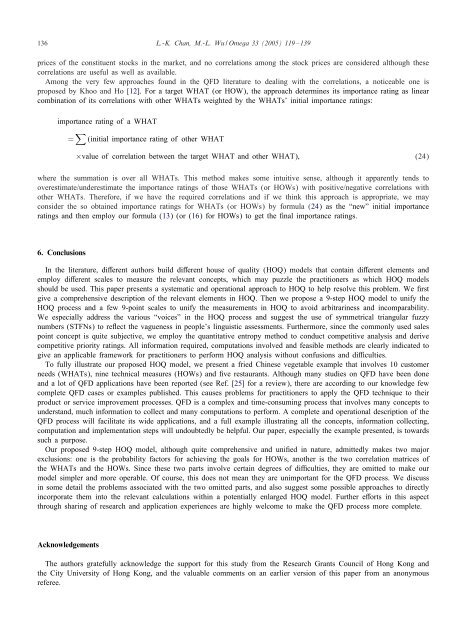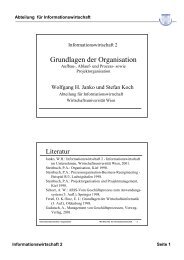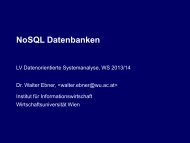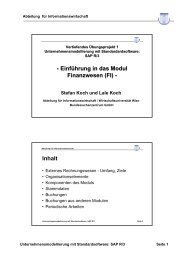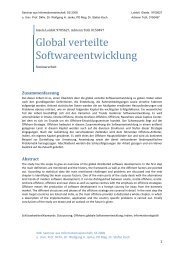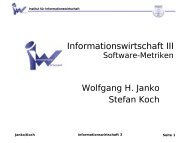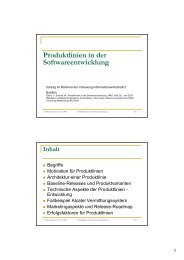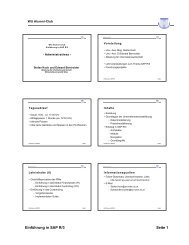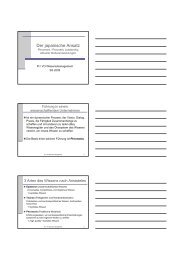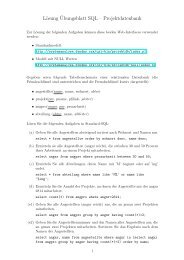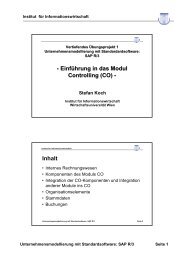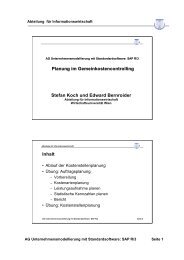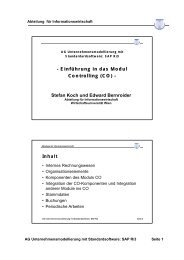A systematic approach to quality function deployment with a full ...
A systematic approach to quality function deployment with a full ...
A systematic approach to quality function deployment with a full ...
You also want an ePaper? Increase the reach of your titles
YUMPU automatically turns print PDFs into web optimized ePapers that Google loves.
136 L.-K. Chan, M.-L. Wu / Omega 33 (2005) 119 – 139<br />
prices of the constituent s<strong>to</strong>cks in the market, and no correlations among the s<strong>to</strong>ck prices are considered although these<br />
correlations are useful as well as available.<br />
Among the very few <strong>approach</strong>es found in the QFD literature <strong>to</strong> dealing <strong>with</strong> the correlations, a noticeable one is<br />
proposed by Khoo and Ho [12]. For a target WHAT (or HOW), the <strong>approach</strong> determines its importance rating as linear<br />
combination of its correlations <strong>with</strong> other WHATs weighted by the WHATs’ initial importance ratings:<br />
importance rating of a WHAT<br />
= � (initial importance rating of other WHAT<br />
×value of correlation between the target WHAT and other WHAT); (24)<br />
where the summation is over all WHATs. This method makes some intuitive sense, although it apparently tends <strong>to</strong><br />
overestimate/underestimate the importance ratings of those WHATs (or HOWs) <strong>with</strong> positive/negative correlations <strong>with</strong><br />
other WHATs. Therefore, if we have the required correlations and if we think this <strong>approach</strong> is appropriate, we may<br />
consider the so obtained importance ratings for WHATs (or HOWs) by formula (24) as the “new” initial importance<br />
ratings and then employ our formula (13) (or (16) for HOWs) <strong>to</strong> get the nal importance ratings.<br />
6. Conclusions<br />
In the literature, di erent authors build di erent house of <strong>quality</strong> (HOQ) models that contain di erent elements and<br />
employ di erent scales <strong>to</strong> measure the relevant concepts, which may puzzle the practitioners as which HOQ models<br />
should be used. This paper presents a <strong>systematic</strong> and operational <strong>approach</strong> <strong>to</strong> HOQ <strong>to</strong> help resolve this problem. We rst<br />
give a comprehensive description of the relevant elements in HOQ. Then we propose a 9-step HOQ model <strong>to</strong> unify the<br />
HOQ process and a few 9-point scales <strong>to</strong> unify the measurements in HOQ <strong>to</strong> avoid arbitrariness and incomparability.<br />
We especially address the various “voices” in the HOQ process and suggest the use of symmetrical triangular fuzzy<br />
numbers (STFNs) <strong>to</strong> re ect the vagueness in people’s linguistic assessments. Furthermore, since the commonly used sales<br />
point concept is quite subjective, we employ the quantitative entropy method <strong>to</strong> conduct competitive analysis and derive<br />
competitive priority ratings. All information required, computations involved and feasible methods are clearly indicated <strong>to</strong><br />
give an applicable framework for practitioners <strong>to</strong> perform HOQ analysis <strong>with</strong>out confusions and di culties.<br />
To <strong>full</strong>y illustrate our proposed HOQ model, we present a fried Chinese vegetable example that involves 10 cus<strong>to</strong>mer<br />
needs (WHATs), nine technical measures (HOWs) and ve restaurants. Although many studies on QFD have been done<br />
and a lot of QFD applications have been reported (see Ref. [25] for a review), there are according <strong>to</strong> our knowledge few<br />
complete QFD cases or examples published. This causes problems for practitioners <strong>to</strong> apply the QFD technique <strong>to</strong> their<br />
product or service improvement processes. QFD is a complex and time-consuming process that involves many concepts <strong>to</strong><br />
understand, much information <strong>to</strong> collect and many computations <strong>to</strong> perform. A complete and operational description of the<br />
QFD process will facilitate its wide applications, and a <strong>full</strong> example illustrating all the concepts, information collecting,<br />
computation and implementation steps will undoubtedly be helpful. Our paper, especially the example presented, is <strong>to</strong>wards<br />
such a purpose.<br />
Our proposed 9-step HOQ model, although quite comprehensive and uni ed in nature, admittedly makes two major<br />
exclusions: one is the probability fac<strong>to</strong>rs for achieving the goals for HOWs, another is the two correlation matrices of<br />
the WHATs and the HOWs. Since these two parts involve certain degrees of di culties, they are omitted <strong>to</strong> make our<br />
model simpler and more operable. Of course, this does not mean they are unimportant for the QFD process. We discuss<br />
in some detail the problems associated <strong>with</strong> the two omitted parts, and also suggest some possible <strong>approach</strong>es <strong>to</strong> directly<br />
incorporate them in<strong>to</strong> the relevant calculations <strong>with</strong>in a potentially enlarged HOQ model. Further e orts in this aspect<br />
through sharing of research and application experiences are highly welcome <strong>to</strong> make the QFD process more complete.<br />
Acknowledgements<br />
The authors grate<strong>full</strong>y acknowledge the support for this study from the Research Grants Council of Hong Kong and<br />
the City University of Hong Kong, and the valuable comments on an earlier version of this paper from an anonymous<br />
referee.


